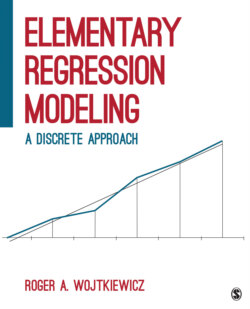Читать книгу Elementary Regression Modeling - Roger A. Wojtkiewicz - Страница 25
На сайте Литреса книга снята с продажи.
Count, Sum, and Transformations
ОглавлениеThe population is the complete set of units of analysis. These units are the object of our study. A sample is a subset of the population. For the sample to be representative of the population without bias, the sample needs to be drawn by using some form of random selection.
The frequency is simply the number of units of analysis in the sample, in a category of a variable, or of a particular value. Frequencies are used to describe nominal and ordinal variables and are used to describe interval variables when the number of values of the interval variable is not too large. A frequency is simply a count. How many are there in total in the sample? How many in the sample attend private schools? How many in the sample have exactly three siblings? By construction, the sum of the frequencies for each value of a variable will add to the total.
The sum is used for interval variables and is the sum of values of the interval variable in the sample or in subgroups of the sample. Often the subgroups for which the sum is calculated are categories of a nominal or ordinal variable. We could take the sum of the number of siblings for the whole sample, or we could take the sum for those in public schools.
Statistical procedures often involve mathematical transformations. Linear transformations involve multiplying, dividing, adding, and subtracting. Nonlinear transformations include squaring, square root, and natural logarithm.
